After the use of concrete pump, cleaning is an essential step. The right method can clean the conveying pipeline as well as transport all the concrete in the pipeline to the pouring place, which not only does not waste concrete but also is economical and environmental friendly. Moreover, timely cleaning is the best way to ensure normal use, improve efficiency and extend service life. Some customers may not know how to clean the concrete pump properly, I will explain a few methods for you.
Generally speaking, there are two cleaning methods, one is water washing and the other is air washing. Regardless of the cleaning method, the valve box and hopper need to be cleaned. It is important to note that it is best to pump 0.5 to 1 cubic meter of mortar before cleaning the pipes. After all the mortar is pumped, stop the machine, flip the switch of the plate valve, and then release the pressure of the accumulator. So, what are the steps of water washing and air washing?
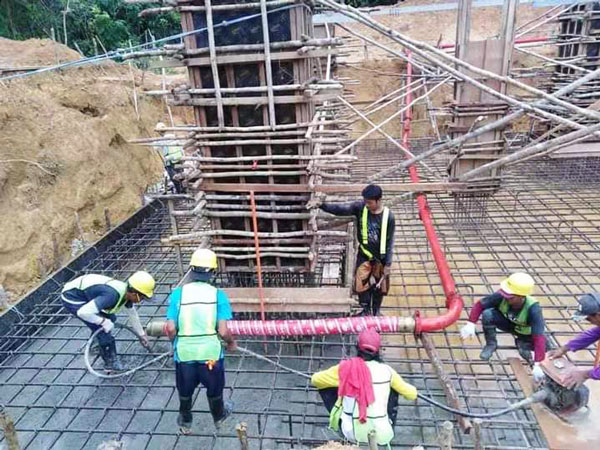
Water washing
There are three common water washing methods. Your can learn about them from the following content.
1. Direct water cleaning method
- Check the wear between the cutting ring and the glasses plate, which is the key to determine the success or failure of the direct water cleaning method. If the wear of the cutting ring and the glasses plate is not serious, that is, the distance between the cutting ring and the glasses plate is less than 0.1mm, and there is no groove scratch of more than 1mm between them, you can use direct water cleaning method without hesitate;
- After pumping the concrete, then pump 0.15~0.25 square of mortar with water-cement ratio of 1:1.5 or 1:2. Then fill the hopper with water and start pumping to the pouring place until clear water flows out from the output of the conveying pipe;
- If the pipeline is shorter and the cleaning effect is better, the cleaning process is over. When the pipeline is long or the cleaning effect is not good, open the discharge door of the hopper, open the reverse pumping, and flush the hopper and distribution valve;
- If the cement pump is pumping upwards and the vertical pumping height is greater than 20m, use a wooden hammer to knock the bottom of the vertical part. If the knocking sound is low, you need to disassemble the elbow and pour out the large aggregate that may have accumulated. Then close the discharge door and pump clean water until the clean water flows out from the output end of the conveying pipe.
Advantages:
- There is no need to remove the pipe of the discharge port, and there is no need to add a sponge ball, which saves time, and the pumping is easier to succeed;
- Especially convenient for cleaning shorter pipelines.
Disadvantages:
- Large water consumption and continuous pumping water required;
- If there are vertical pumplines, the elbows must be removed;
- The tightness of S tube valve is strictly required;
- When the pipelines are long, there will be residue in the pipelines easily.
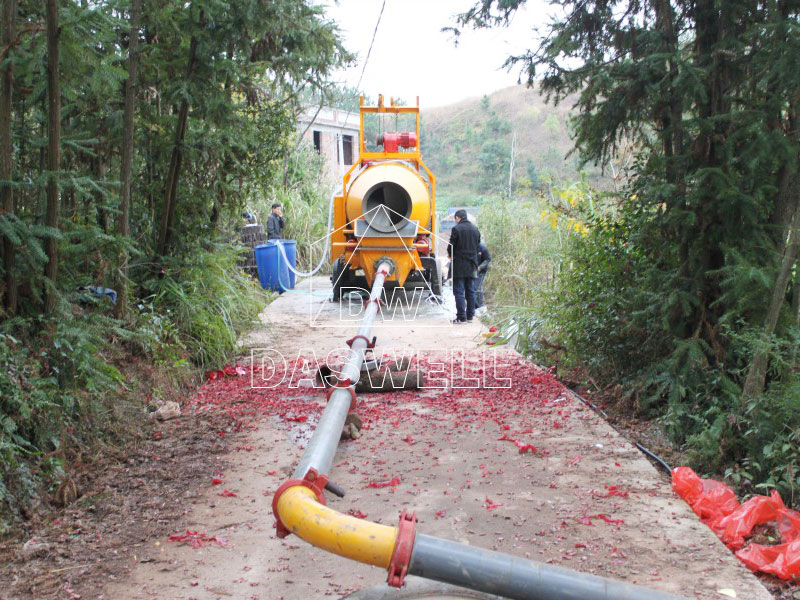

2. Removal of pipes method
- After pumping the concrete, reverse the pump once or twice to remove the pressure in the delivery pipe. If there is the vertical pipelines, the shut-off valve must be closed first to prevent backflow, and then the discharge pipe must be removed;
- Open the hopper door and reverse pump, flush the S valve, concrete cylinder and hopper; Hollow out the entrance of the first delivery pipe and insert it into a water-soaked sponge ball or a cylindrical cleaning piston;
- Close the hopper door, open the shut-off valve, and pump clean water until the sponge ball is pumped out from the output end of the delivery pipe.
Advantages:
- The pipes are well cleaned;
- When cleaning, the flow rate of pumping water is low and can be paused at any time.
Disadvantages:
It is difficult to reconnect the discharge pipe after removing it, which is time-consuming and laborious.
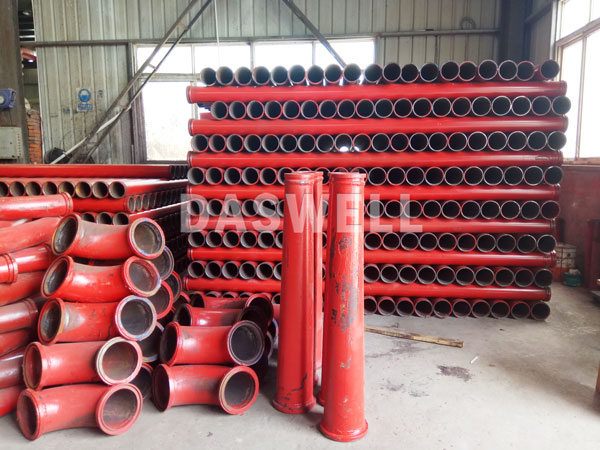

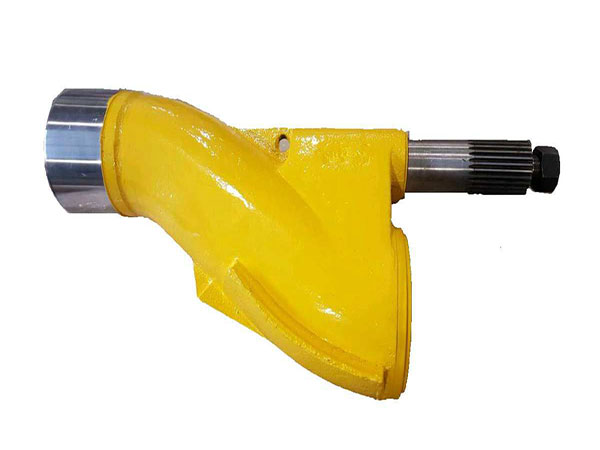
3. Adding piston method
- Use 10 to 20 cement bags rolled into a column with a diameter slightly smaller than the diameter of the conveying cylinder, a slightly pointed head and a length of about 400mm. Tie it with fine wire and tie the cleaning ball lightly with wire at the end of the column, then soak it with water;
- After pumping the concrete, reverse pump 1 or 2 times to eliminate the pressure in the delivery pipe and press the button to make the concrete cylinder piston retreat to the last point. If concrete is pumped upward and there is a shut-off valve, it must be closed first to prevent backflow of concrete;
- Remove the discharge pipe, open the hopper door and reverse pump to flush the concrete from the distribution valve, concrete cylinder and hopper;
- Close the hopper door and add water to the hopper. When the water is added to the height of 2/3 of the diameter of the concrete cylinder, put the head of the cylinder into the concrete cylinder towards the direction of the distribution valve. Use a wooden stick with a length of about 1m and a diameter of about 30mm to firmly hold the column, and continue to add water to the height of the centerline of the stirring shaft;
- Withdraw the wooden stick, start pumping quickly and keep adding water until the column is pumped out from the output of the delivery pipes.
Advantages:
- The pipes are well cleaned;
- When cleaning, the flow rate of pumping water is low and can be paused at any time;
- It reduces the trouble of removing discharge pipes and elbows.
Disadvantages:
- The operation is more complex and the requirements for the operator are high;
- Distribution valve easily cuts off the column.
Notice: When the water washing is almost finished, pay attention to the water in the pipeline, do not flow to the concrete pouring place, so as not to affect the quality of concrete. Water washing method is simple to operate and less dangerous, so it is more commonly used.

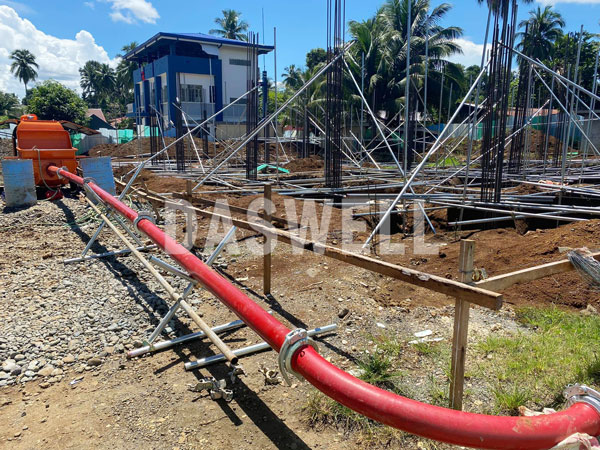
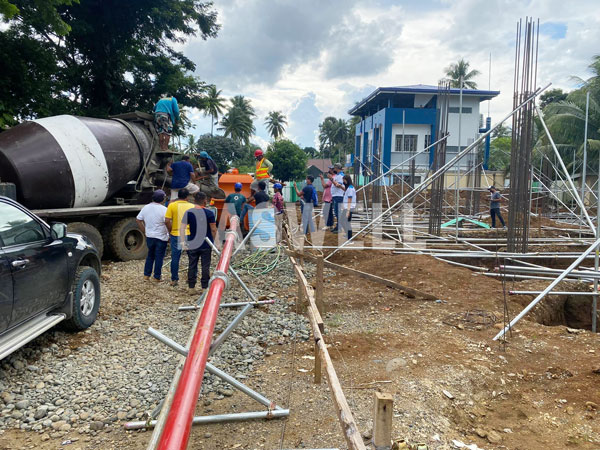
Air washing
- Air washing is purging by compressed air. This cleaning method is to soak the water cleaning ball first plugged into the air-washing joint. Then connect the first variable diameter straight pipe, and connect the safety cover to the end of the pipe (the hole of the safety cover must face down).
- When air washing, the pressure of compressed air must be controlled not to exceed 0.8 MPa. The air valve should be opened slowly, and the air valve should be opened wide only when the concrete can flow out smoothly. After the air washing is finished, the air valve should be closed immediately.
Notice: Air washing needs to be equipped with an air compressor, which must be operated in strict accordance with the regulations, and the pipeline must be well sealed. However, air washing cannot wash long pipelines, and long-distance pipelines should be cleaned in sections. This method must be operated with caution and is very dangerous. Therefore, the construction personnel should stay away from the exit direction to prevent the pellets or sponge balls from flying out and hurting people.
The above cleaning method is for reference only. Depending on the situation, you have to take different measures.
After you purchase the concrete pump, your manufacturer will guide you how to maintain and clean your pump.
